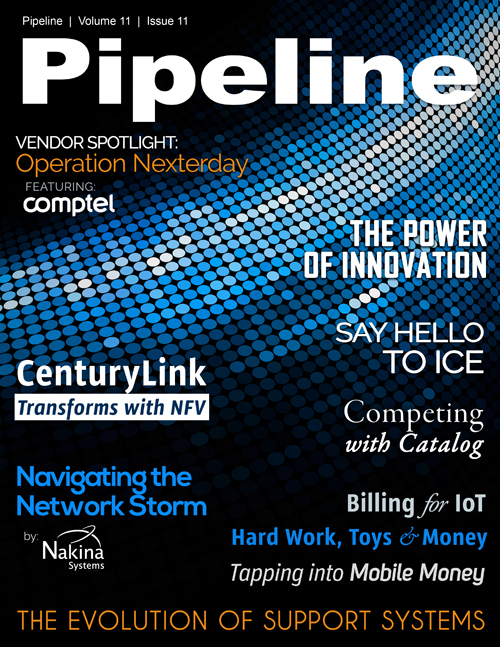CenturyLink on Managing the Transformation to Virtualization
By: Bill O'Brien
 The networking industry is experiencing a kind of renaissance, with impacts that will be far-reaching. The acronyms SDN and NFV are the buzz and all the pundits are weighing in, but few are the
stories of real production deployments with real customers consuming virtual network functions. Network Functions Virtualization or NFV represents a glass ceiling being transcended with carriers
building off the influence of cloud architectures to virtualize network functions. Network is finally feeling the impact of virtualization that the computing and storage industries experienced
almost a decade ago, and there is a lot we can learn from that transformation. Anyone familiar with cloud computing architectures will immediately recognize and understand NFV. Another term, often
times used synonymously with NFV is Software Defined Networking, or SDN. SDN tends to be a catchall phrase but imbued with a vast array of other connotations.
The networking industry is experiencing a kind of renaissance, with impacts that will be far-reaching. The acronyms SDN and NFV are the buzz and all the pundits are weighing in, but few are the
stories of real production deployments with real customers consuming virtual network functions. Network Functions Virtualization or NFV represents a glass ceiling being transcended with carriers
building off the influence of cloud architectures to virtualize network functions. Network is finally feeling the impact of virtualization that the computing and storage industries experienced
almost a decade ago, and there is a lot we can learn from that transformation. Anyone familiar with cloud computing architectures will immediately recognize and understand NFV. Another term, often
times used synonymously with NFV is Software Defined Networking, or SDN. SDN tends to be a catchall phrase but imbued with a vast array of other connotations.SDN means a lot of things to a lot of different people, similar to when "cloud" gained traction in the enterprise space. Article after article talks about what it is and is not, leaving most even more confused. The term SDN can have broad connotations ranging from writing your own protocols and running a custom network OS top white box switch to a simple SDN controller using openflow to configure southbound network elements. Writing custom protocols is likely to remain relegated to the Googles of the world and researchers. Yet, a middle ground is achievable. Zero-touch programmable platforms front-ended with robust Application Program Interfaces (APIs) allowing users and systems to define and design services dynamically will become commonplace. Over time, network organizations will be populated with more network savvy developers and system engineers than network engineers. The biggest impacts will be seen once organizations have fully automated network platforms that are integrated with curated data sets and Big Data platforms. These curated data sets will become the oxygen for the network platforms, enabling highly customized network services to its clients.
About Ericsson
Ericsson provides a set of flexible, instantaneous and cognizant OSS/BSS software systems plus consulting and integration services, based on the deepest and broadest experience in the business. Our OSS/BSS Agility Suite is designed and built to be best-in-class for ICT, so you can seize the most advantageous market position possible, today and tomorrow. You’ll gain the agility you need to profitably meet the demands and expectations of the Networked Society. Look to Ericsson as you move from telco to ICT company, and from service provider to experience provider. http://www.ericsson.com/ossbss
3
NFV’s scope is more narrow and defined than SDN and thus easier to understand and implement. Early in cloud, there was a lot of criticism of cloud platforms not being ready for enterprise, but enterprise and its applications were not ready or properly matched to cloud architectures. A similar transformation will happen in the NFV space, the first generation of network functions are just “fork-lifted” to x86 server architectures with little to no optimization or awareness of the NFV platforms they are running on. Network vendors will likely need to rewrite their Virtual Network Functions (VNF) or risk being outpaced by start-ups that natively develop for cloud or NFV.
Implementing NFV requires the deployment of generalized pods of servers, storage and network equipment that will be abstracted away by layers of software and controlled by additional orchestration layers. Once deployed, these pods can be used for a wide variety of things versus classic network equipment which typically had a much narrow scope of functionality. NFV pods can be used to run almost anything concurrently – firewalls, routers, load-balancers, WAN accelerators, SBCs, BRAS, and even monitoring tools or EMSs.




















